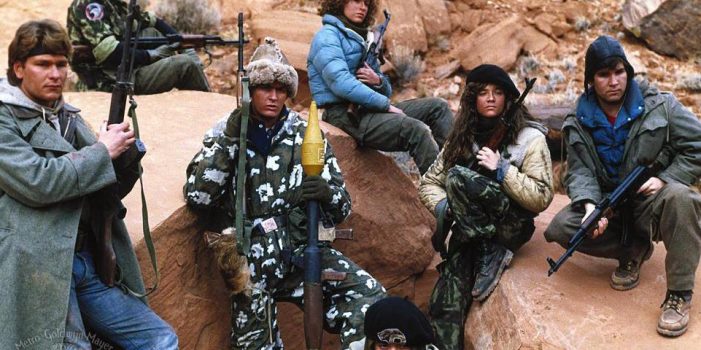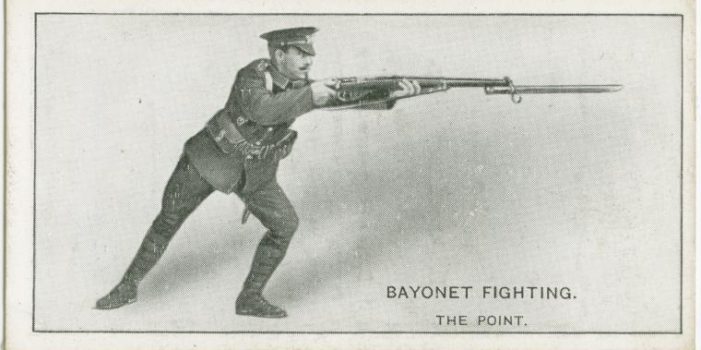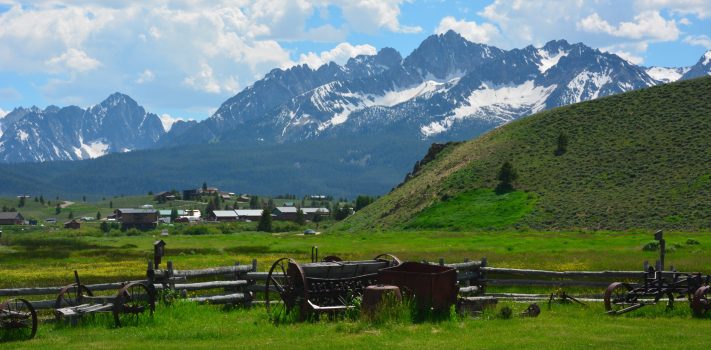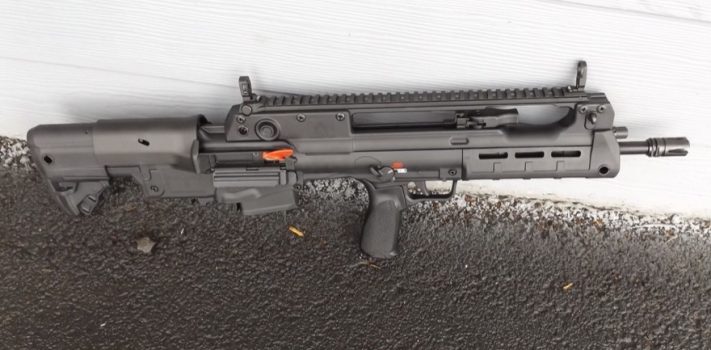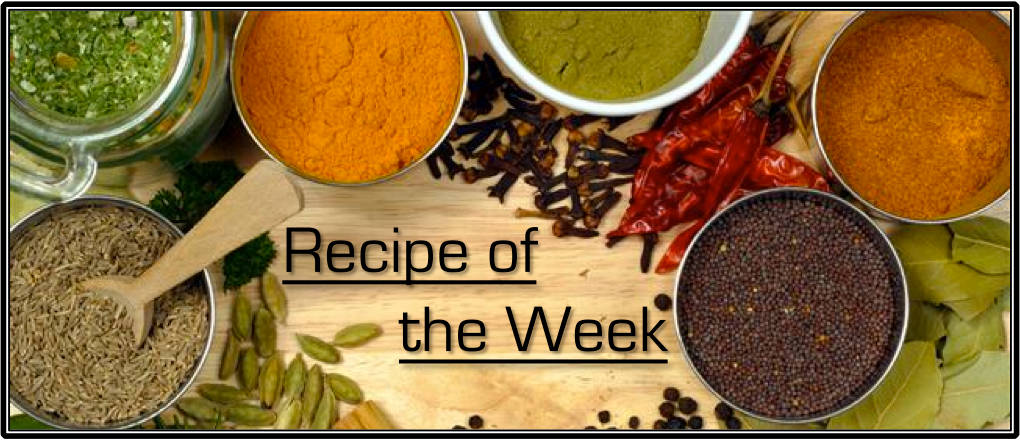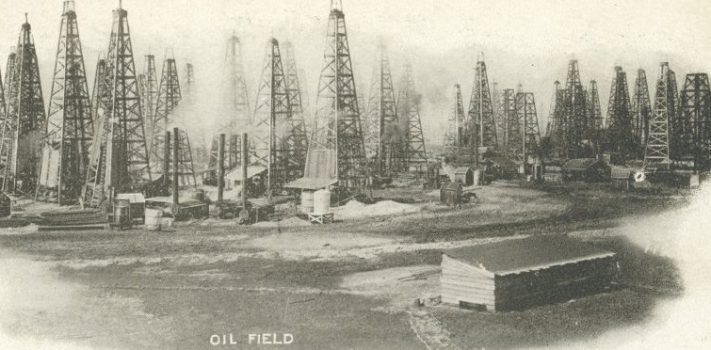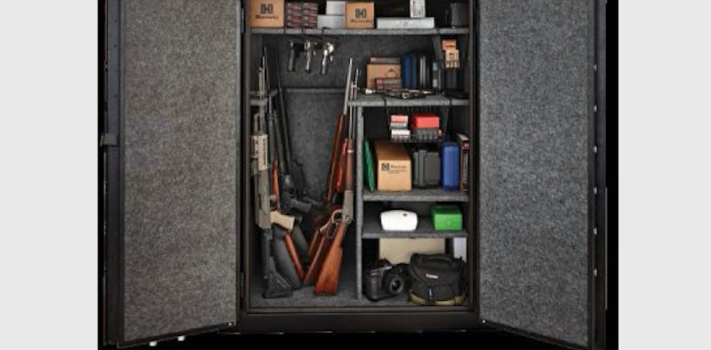On August 10th, 1984, Red Dawn, the first PG-13 rated movie, starring Patrick Swayze was released. This movie (the 1984 original, not the 2012 remake) is a favorite of both JWR and HJL. The byword: “Wolverines!”
- Ad USA Berkey Water Filters - Start Drinking Purified Water Today!#1 Trusted Gravity Water Purification System! Start Drinking Purified Water now with a Berkey water filtration system. Find systems, replacement filters, parts and more here.
- Ad Ready Made Resources, Trijicon Hunter Mk2$2000 off MSRP, Brand New in the case
Rainwater Harvesting – Part 2, by K.R.
(Continued from Part 1. This concludes the article.)
Our Primary Rainwater Capture System
When the time came for us to put in a new garage, we had the opportunity to install a larger rainwater system that could also capture snow melt, as well as store water during the winter.
The collection system is an in-ground French drain running the 60-foot length of the building, between the eaves of the building and the hillside. The drain empties into a 1,000-gallon concrete underground cistern. We put in a septic tank for the toilet in the garage, so we just dropped a second septic tank to use as a cistern for this system. We use a small Eco-Worthy 12 volt DC submersible pump, powered by a 100-watt PV solar panel, to retrieve the water. An alternative retrieval method we use is an inexpensive Milescraft 1314 transfer pump, powered by an electric drill, to suck the water the 8 feet from the bottom of the cistern.
(When choosing a solar panel and a pump, make sure that the panel is rated at the voltage and power that matches the requirements of the pump. This way, the panel may be wired directly to the pump without any charge controller.)
The interior of the cistern is coated with a waterproof sealant, as the concrete is porous and would otherwise only hold water for a limited time. We used BASF MasterSeal 583, which also fills cracks in addition to providing a durable seal. The cistern is next to outdoor raised beds, a greenhouse, and the cow pen. Our well-fed hydrant is also nearby, so we can use either the well water or the cistern water on the garden, greenhouse, and animals.Continue reading“Rainwater Harvesting – Part 2, by K.R.”
- Ad Survival RealtyFind your secure and sustainable home. The leading marketplace for rural, remote, and off-grid properties worldwide. Affordable ads. No commissions are charged!
- Ad LifeSaver 20K JerryCan Water PurifierThe best water jerrycan you can buy on the market! Mention Survivalblog for a Free Filter ($130 Value)
SurvivalBlog Readers’ & Editors’ Snippets
This weekly column is a collection of short snippets: responses to posted articles, practical self-sufficiency items, how-tos, lessons learned, tips and tricks, and news items — both from readers and from SurvivalBlog’s editors. Note that we may select some long e-mails for posting as separate letters.
—
A useful 22-minute instructional video: Basic Radio Comms Setup for SHTF — Featuring UV5R.
o o o
Reader Tim J. recommended this video from Grunt Proof: Why do all YouTube Preppers get Political?
“Bury your head in the sand all you want, but politics do have an affect on your life. Just ask the survivors of the holocaust, or literally every other catastrophe that has ever happened. If you want to prepare for survival, you can start by paying attention to what your elected officials are doing…”
o o o
Death from above, printed at home: Ukrainians deploy DIY weapons against Russian troops. (A hat tip to Reader S.B., for the link.)
o o o
Bjorn Andreas Bull-Hansen: What Is Wealth? The Answer Might Surprise You.
o o o
- Ad Click Here --> Civil Defense ManualNOW BACK IN STOCK How to protect, you, your family, friends and neighborhood in coming times of civil unrest… and much more!
- Ad Trekker Water Station 1Gal Per MinuteCall us if you have Questions 800-627-3809
The Editors’ Quote of the Day:
“I used to visit and revisit it a dozen times a day, and stand in deep contemplation over my vegetable progeny with a love that nobody could share or conceive of who had never taken part in the process of creation. It was one of the most bewitching sights in the world to observe a hill of beans thrusting aside the soil, or a rose of early peas just peeping forth sufficiently to trace a line of delicate green.” – Nathaniel Hawthorne
- Ad Civil Defense ManualClick Here --> The Civil Defense Manual... The A to Z of survival. Looks what's in it... https://civildefensemanual.com/whats-in-the-civil-defense-manual/
- Ad SIEGE belt: the original unmatched action belt. Proven in many unexpected situations on wearers' daily routines & travels. Engineered for extreme durability, performance, comfort & stunning looks. The only effective EDC you can take anywhere.SIEGE STOVES: prep for adventure/crisis with the ultimate ultra-compact survival stove. SIEGE BELTS: prized by those in the know. Blazing fast. Stunning appearance. USA-made.
Preparedness Notes for Tuesday — August 9, 2022
August 9th, 1831 was the birthday of James Paris Lee (August 9, 1831 – February 24, 1904). He was a Scottish-Canadian and later American inventor and arms designer, best known for inventing the bolt action that led to the Lee-Metford and Lee-Enfield series of rifles.
—
Some sad news: ‘Magnum P.I.’ Actor Roger E. Mosley Dies At 83.
—
SurvivalBlog Writing Contest
Today we present another entry for Round 102 of the SurvivalBlog non-fiction writing contest. The prizes for this round include:
First Prize:
- The photovoltaic power specialists at Quantum Harvest LLC are providing a store-wide 10% off coupon. Depending on the model chosen, this could be worth more than $2000.
- A Gunsite Academy Three Day Course Certificate. This can be used for any of their one, two, or three-day course (a $1,095 value),
- A course certificate from onPoint Tactical for the prize winner’s choice of three-day civilian courses, excluding those restricted for military or government teams. Three-day onPoint courses normally cost $795,
- Two cases of Mountain House freeze-dried assorted entrees in #10 cans, courtesy of Ready Made Resources (a $350 value),
- A $250 gift certificate good for any product from Sunflower Ammo,
- American Gunsmithing Institute (AGI) is providing a $300 certificate good towards any of their DVD training courses.
- Two sets of The Civil Defense Manual, (in two volumes) — a $193 value — kindly donated by the author, Jack Lawson.
Second Prize:
- A Front Sight Lifetime Diamond Membership, providing lifetime low-cost training at any Front Sight Nevada course, with no limit on repeating classes. This prize is courtesy of a SurvivalBlog reader who prefers to be anonymous.
- A SIRT STIC AR-15/M4 Laser Training Package, courtesy of Next Level Training, that has a combined retail value of $679
- Two 1,000-foot spools of full mil-spec U.S.-made 750 paracord (in-stock colors only) from www.TOUGHGRID.com (a $240 value).
- Two Super Survival Pack seed collections, a $150 value, courtesy of Seed for Security, LLC,
- A transferable $150 FRN purchase credit from Elk Creek Company, toward the purchase of any pre-1899 antique gun. There is no paperwork required for delivery of pre-1899 guns into most states, making them the last bastion of firearms purchasing privacy!
Third Prize:
- Three sets each of made-in-USA regular and wide-mouth reusable canning lids. (This is a total of 300 lids and 600 gaskets.) This prize is courtesy of Harvest Guard (a $270 value)
- A Royal Berkey water filter, courtesy of Directive 21 (a $275 value),
- A LogOX 3-in-1 Forestry MultiTool (a $189 value) and a WoodOx Sling (a $79.95 value), courtesy of LogOx, both made in USA.
- A transferable $100 FRN purchase credit from Elk Creek Company, toward the purchase of any pre-1899 antique gun.
—
More than $750,000 worth of prizes have been awarded since we started running this contest. Round 102 ends on September 30th, so get busy writing and e-mail us your entry. Remember that there is a 1,500-word minimum, and that articles on practical “how-to” skills for survival have an advantage in the judging.
- Ad USA Berkey Water Filters - Start Drinking Purified Water Today!#1 Trusted Gravity Water Purification System! Start Drinking Purified Water now with a Berkey water filtration system. Find systems, replacement filters, parts and more here.
- Ad STRATEGIC RELOCATION REALTYFOR SALE: Self-sustaining Rural Property situated meticulously in serene locales distant from densely populated sanctuary cities. Remember…HISTORY Favors the PREPARED!
Rainwater Harvesting – Part 1, by K.R.
Imagine that you have a 2,000 square foot cabin in the Inland Northwest and a spring rain shower thunders by that drops an inch of rain. If you were equipped to capture the rain that hit the roof of your cabin, you would have just picked up over 1,200 gallons of water.
Rainwater harvesting is an easy win that can provide a significant supply of water. With a relatively small investment, you can provide a significant amount of water that you can use for gardens, washing, animals, firefighting, and–if treated–drinking. At the very least, capturing your rainwater as a redundant source of water makes you more prepared for tough times, and gives you greater peace of mind.
This essay will help you plan and design a rainwater harvesting system that meets your needs; provide a wide range of examples of harvesting systems; provides a quick review of treatment of water for drinking; and summarizes some lessons we’ve learned with our in-ground rainwater harvesting system.
Why Harvest Rainwater?
A significant amount of water hits our land. If we use even a fraction of it, capturing and using it saves money in electricity, saves wear-and-tear on our well pump, and provides a reliable source of water–should our well not function. Most of the water we capture is used for our garden and livestock, but people can also use it for washing, flushing toilets, and–in an emergency–for drinking. Water security is food security, which is very important with the current threats of food shortages.
Rainwater can also help store thermal energy. We are currently building a greenhouse that will have a 1000 gallon water tank in it. The high heat capacity of water means that the water will absorb radiant energy from the sun, then release that thermal energy over time to moderate the temperature inside the greenhouse.Continue reading“Rainwater Harvesting – Part 1, by K.R.”
- Ad California Legal Rifles & Pistols!WBT makes all popular rifles compliant for your restrictive state. Choose from a wide range of top brands made compliant for your state.
- Add Your Link Here
SurvivalBlog’s News From The American Redoubt
This weekly column features news stories and event announcements from around the American Redoubt region. (Idaho, Montana, eastern Oregon, eastern Washington, and Wyoming.) Much of the region is also more commonly known as The Inland Northwest. We also mention companies of interest to preppers and survivalists that are located in the American Redoubt region. Today’s focus is on wildfires, throughout the American Redoubt region.
Idaho
Coming up on August 27th, in Stanley, Idaho (pictured above, in a photo recently snapped by Avalanche Lily): Sawtooth Salmon Festival.
o o o
Wildlife officials euthanize grizzly responsible for livestock attacks around Boundary County.
o o o
Moose Fire 23% contained, wildfire grows to 58,168 acres. Here is a quote:
“The Moose Fire began on July 17. High winds, along with hot, dry conditions have been an ongoing challenge for firefighters working to protect homes and buildings in the area. Two helicopter pilots were killed last month while assisting with firefighting efforts. No other injuries have been reported.”
Continue reading“SurvivalBlog’s News From The American Redoubt”
The Editors’ Quote of the Day:
“A man’s house is his castle and fortress, et domus sua cuique tutissimum refugium.” (The Latin at the end translates as ‘and each man’s home is his safest refuge.’) – Sir Edward Coke, The Institutes of the Laws of England (1628)
Preparedness Notes for Monday — August 8, 2022
August 8th is the birthday of Terry Nation (August 8th, 1930 – March 9th, 1997), who was a Welsh television writer and novelist. Nation wrote two series, Survivors and Blake’s 7, in the 1970s. Survivors was re-made a few years ago.
—
The new SurvivalRealty listing in North Carolina caught my eye: Heritage farm with operating winery.
Today we are posting a review written by our Filed Gear Editor Emeritus, Pat Cascio.
Springfield Armory Hellion, by Pat Cascio
I hate to admit it, but I came to the bullpup dance a little bit late. I’m a dyed-in-the-wool fan of the AR-style of rifles, as well as the M14 (M1A) rifles. Some folks like to say I’m older than dirt – well, not quite. When I joined the Illinois National Guard in June of 1969, I was originally issued a 19-pound BAR. That didn’t cut it – I weighed only 135 pounds at the time. I quickly traded that BAR in for an M1 Garand…and as they say, the rest is history. Basic Training was my introduction to the M14, and my Advanced Infantry Training introduced me to the M16.
Upon returning to my National Guard unit, I became a full-time employee, and in short order, our M1 Garand rifles were replaced with brand-new Colt M16 rifles. Along with two other new full-time employees, I was tasked with training everyone in the battalion with the new M16 rifles. In the meantime, I joined the state rifle and pistol team and we were issued match-grade M14s and 1911 pistols that we used in competition.
So, I have a long history with the M16 and the civilian version called the AR-15 – and Colt used that name (AR-15) before a lot of other rifles makers jumped on board, and were also producing semi-auto only versions of the M16 – and even today, anything that resembles an AR-15 – by whatever name it is called is still referred to as an AR or an AR-15.
Today we’re looking at a new breed of rifle from Springfield Armory called the Hellion, and it is not an AR, no matter which way you look at it. It is a Bullpup design, and that means that the “action” portion of the rifle is behind the trigger guard, allowing for a very compact design, but it still has a 16-inch barrel to get the most out of ballistics.Continue reading“Springfield Armory Hellion, by Pat Cascio”
Recipe of the Week: Arden’s Dutch Oven Spaghetti With Beef
The following recipe for Dutch oven spaghetti with beef is from reader Arden K. It uses dried spaghetti, and there is no need to boil it, in advance.
Ingredients
- 1 pound of lean or extra-lean ground beef
- 1 small onion, chopped
- 1 medium green pepper, chopped
- 2 cloves of garlic (or less, to taste), minced
- 1-1/2 cups water
- 1 can (8 ounces) tomato sauce
- 1 can (14-1/2 ounces) diced tomatoes, undrained
- 1 tablespoon chili powder (or less, to taste)
- 1 tablespoon grape jelly (optional)
- 1/2 teaspoon salt (or less, to taste, and to suit your diet)
- 6 ounces uncooked thin spaghetti, halved
Directions
- In a Dutch oven, cook beef, onion, green pepper, and garlic over medium heat, As you do so, crumble the beef.
- Cook and stir often until the beef is browned through and the vegetables get tender (about 8-to-10 minutes), then drain.
- Add the water, tomato sauce, canned tomatoes (undrained), grape jelly, chili powder, and salt.
- Bring to a boil.
- Break the dried spaghetti stalks in half, and mix them in.
- Reduce the heat to a simmer. Stir, to make sure that all of the spaghetti gets submerged. Then continue to simmer it with the dutch oven covered, until the spaghetti is tender — about 8 minutes.
- Drain any excess water.
SERVING
Serve immediately. But this can be simmered a bit longer, if you need to match the serving time of any other dish(es) for your meal.
STORAGE
This can be stored in a separate Pyrex or plastic dish in a refrigerator overnight, for leftovers. But do not store it in your dutch oven, or it will rust.
—
Do you have a favorite recipe that would be of interest to SurvivalBlog readers? In this weekly recipe column, we place emphasis on recipes that use long term storage foods, recipes for wild game, dutch oven and slow cooker recipes, and any that use home garden produce. If you have any favorite recipes, then please send them via e-mail. Thanks!
Economics & Investing For Preppers
Here are the latest news items and commentary on current economics news, market trends, stocks, investing opportunities, and the precious metals markets. We also cover hedges, derivatives, and obscura. Most of these items are from the “tangibles heavy” contrarian perspective of SurvivalBlog’s Founder and Senior Editor, JWR. Today, we look at declining oil prices. (See the Commodities section.)
Precious Metals:
Gold-To-Silver Ratio Rises To Highest Level Since 1990.
o o o
Gold Bull Peter Schiff Warns That This Recession Is Just Getting Started.
Economy & Finance:
Some creative tap dancing, by the Dallas Federal Reserve Bank: U.S. Likely Didn’t Slip into Recession in Early 2022 Despite Negative GDP Growth. JWR’s Comment: Levon Helm, portraying Mr. Rate in Shooter said it best: “They also said that artificial sweeteners were safe, WMDs were in Iraq, and Anna Nicole married for love.”
o o o
At Wolf Street: Layoffs, Discharges, Quits, Job Openings, and Hires: Still Massive Churn & Job Hopping, but Losing Some Steam.
o o o
At Quartz: The weird contradictions rendering the US economy inexplicable.
o o o
These Experts Predict the Worst Is Yet To Come in the Stock Market. Here’s Why — And How To Prepare.
The Editors’ Quote of the Day:
“Want of foresight, unwillingness to act when action would be simple and effective, lack of clear thinking, confusion of counsel until the emergency comes, until self-preservation strikes its jarring gong – these are the features which constitute the endless repetition of history.” – Winston Churchill
Preparedness Notes for Sunday — August 7, 2022
August 7th, 1933 was the birthday of Jerry Pournelle. He, along with Larry Niven authored the survivalist classic Lucifer’s Hammer. Jerry passed away on September 8, 2017, at 84 years of age.
—
SurvivalBlog Writing Contest
Today we present another entry for Round 102 of the SurvivalBlog non-fiction writing contest. The prizes for this round include:
First Prize:
- The photovoltaic power specialists at Quantum Harvest LLC are providing a store-wide 10% off coupon. Depending on the model chosen, this could be worth more than $2000.
- A Gunsite Academy Three Day Course Certificate. This can be used for any of their one, two, or three-day course (a $1,095 value),
- A course certificate from onPoint Tactical for the prize winner’s choice of three-day civilian courses, excluding those restricted for military or government teams. Three-day onPoint courses normally cost $795,
- Two cases of Mountain House freeze-dried assorted entrees in #10 cans, courtesy of Ready Made Resources (a $350 value),
- A $250 gift certificate good for any product from Sunflower Ammo,
- American Gunsmithing Institute (AGI) is providing a $300 certificate good towards any of their DVD training courses.
- Two sets of The Civil Defense Manual, (in two volumes) — a $193 value — kindly donated by the author, Jack Lawson.
Second Prize:
- A Front Sight Lifetime Diamond Membership, providing lifetime low-cost training at any Front Sight Nevada course, with no limit on repeating classes. This prize is courtesy of a SurvivalBlog reader who prefers to be anonymous.
- A SIRT STIC AR-15/M4 Laser Training Package, courtesy of Next Level Training, that has a combined retail value of $679
- Two 1,000-foot spools of full mil-spec U.S.-made 750 paracord (in-stock colors only) from www.TOUGHGRID.com (a $240 value).
- Two Super Survival Pack seed collections, a $150 value, courtesy of Seed for Security, LLC,
- A transferable $150 FRN purchase credit from Elk Creek Company, toward the purchase of any pre-1899 antique gun. There is no paperwork required for delivery of pre-1899 guns into most states, making them the last bastion of firearms purchasing privacy!
Third Prize:
- Three sets each of made-in-USA regular and wide-mouth reusable canning lids. (This is a total of 300 lids and 600 gaskets.) This prize is courtesy of Harvest Guard (a $270 value)
- A Royal Berkey water filter, courtesy of Directive 21 (a $275 value),
- A LogOX 3-in-1 Forestry MultiTool (a $189 value) and a WoodOx Sling (a $79.95 value), courtesy of LogOx, both made in USA.
- A transferable $100 FRN purchase credit from Elk Creek Company, toward the purchase of any pre-1899 antique gun.
—
More than $750,000 worth of prizes have been awarded since we started running this contest. Round 102 ends on September 30th, so get busy writing and e-mail us your entry. Remember that there is a 1,500-word minimum, and that articles on practical “how-to” skills for survival have an advantage in the judging.
Upgrading an Inexpensive Gun Safe, by PrepperDoc
Many prepared individuals have an alternate living location. It might be called a “retreat,” a “bug-out house” or simply their “vacation home.” Perhaps in a “safer” location or in a state with more favorable legal climate on important features of self-provision and security. This alternate living location will typically be stocked with valuable implements and provisions, likely including firearms, ammunition, cash, precious metals and other valuables. Sitting vacant much of the time, it might become a lucrative target even in “normal times” before the national situation has even significantly deteriorated. A thief entering the vacant home would have ample time to work at overcoming locks and safes — so the quality of such equipment becomes key to the long-term usefulness of the alternate living location.
Unfortunately, many of us are not independently wealthy (especially earlier in our lives) and therefore we sometimes make choices in the quality of fire/burglar safes, and gun safes, that we later regret. This is the story of how I recognized a poor choice of a gun safe, and found ways to improve its security. In the process, I will attempt to review the key features of higher quality security containers.
OPSEC: Moving It Myself
Like many, I purchased a moderate-cost gun safe (TS 12-30) from a well-known farm equipment chain store and was able to get it home and installed in my alternate home, with no help from strangers (OPSEC benefit). The first security goal with a safe is to prevent the thief from simply carting it off the premises to work on it at their leisure in THEIR home. Therefore the gun safe was securely bolted into the home. If the floor is a concrete slab, appropriate hardware can secure it; if a wood frame house, then careful selection of bolts / screws can secure it. The thief cannot reach the head of the bolts or screws (which are inside the safe). The goal is to make it difficult to rock the safe, or get a pry bar behind any surface and create significant leverage. Arranging the safe so that the door opens properly, but there is little room to get a crowbar at any gap is important. Make your safe INCONVENIENT for the thief!Continue reading“Upgrading an Inexpensive Gun Safe, by PrepperDoc”

